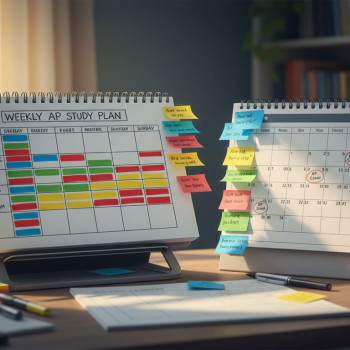Why Group Tutoring With Friends Can Be a Game Changer for AP Prep
Watching your child prepare for AP exams can feel like watching someone train for a marathon: there’s enthusiasm, occasional panic, and the very real knowledge that pacing matters. Group tutoring with friends—when done right—turns solitary miles into a relay race. It keeps motivation high, spreads out the workload, and can make studying feel less like a chore and more like teamwork.
For many families, the appeal is practical as well as emotional: sharing resources reduces cost, diverse strengths balance weaknesses, and a social study environment can improve persistence. But like any good plan, execution matters. Below I’ll walk you through how to form effective groups, design study plans, manage costs and schedules, and blend personal tutoring (including Sparkl’s tailored support) into the mix so your child gets the best of both worlds.

Is Group Tutoring Right for Your Family?
Consider your child’s learning style
Some students thrive with peers: they ask questions, enjoy debate, and get energized by group problem-solving. Others find groups distracting or prefer one-on-one attention. Talk with your child: are they the kind who explains concepts to others? Do they benefit from hearing different perspectives? If yes, group tutoring could amplify their strengths.
Advantages and trade-offs
- Pros: Lower per-person cost, built-in accountability, exposure to varied problem-solving approaches, and an enjoyable way to stay committed over months.
- Cons: Risk of off-topic chatter, uneven participation, and the possibility that weaker or stronger students may not get exactly what they need academically without additional support.
How to Form a Productive AP Study Group
Choose the right people
Size matters. A group of three to five students usually hits the sweet spot: enough voices for varied perspectives, but small enough to stay focused. Aim for members who are similar in commitment and availability. Mixing students who are only one to two grade levels apart in proficiency (not wildly separated) helps ensure lessons stay relevant for everyone.
Set shared goals and a group charter
At the first meeting, have the group write a simple charter: purpose (e.g., “Prepare for AP Calculus AB, May 2026”), meeting cadence, roles (timekeeper, note-taker, problem curator), and behavior norms (no phones during focused time, punctuality, equitable speaking time). A short, written agreement goes a long way toward keeping everyone accountable.
Schedule smartly
Consistency beats intensity. Twice-weekly sessions of 60–90 minutes spread across the term are often more effective than marathon cram sessions. Reserve at least one weekly meeting for active practice—timed sections, problem sets, or mock free-response answers—so students build stamina gradually.
Designing a Group Study Plan That Works
Balance content review with practice
AP exams reward both conceptual understanding and test-specific skills like pacing and question interpretation. A balanced study plan mixes:
- Mini-lectures (peer-led or tutor-led) to review concepts
- Guided practice with immediate feedback
- Timed sections or practice exams to build test-taking stamina
- Reflection time to discuss mistakes and deepen understanding
Example 12-week plan for an AP course
| Weeks | Focus | Group Activities |
|---|---|---|
| 1–3 | Foundational concepts and syllabus mapping | Concept teaching rotations, create question bank |
| 4–6 | Medium-difficulty practice and problem-solving | Guided practice, peer explanations, mini quizzes |
| 7–9 | Advanced topics and timed practice | Timed sections, FRQ practice, targeted review sessions |
| 10–12 | Full-length practice exams and final polishing | Full practice tests, error logs, final content blitz |
This template is flexible—move faster or slower depending on how the group performs on regular check-ins.
Roles That Keep the Group Focused
Rotate responsibilities
Assigning roles gives structure and helps quieter members participate. Typical roles include:
- Facilitator: Keeps the meeting on time and moves the agenda forward.
- Problem Curator: Chooses practice questions or creates short quizzes.
- Explainer: Prepares a 10–15 minute mini-lesson on an assigned topic.
- Reviewer/Note-Taker: Summarizes key takeaways and distributes them after the meeting.
Practical Ways to Pool Resources and Share Costs
Money matters—and there are fair ways to split costs
One of the biggest draws of group tutoring is cost efficiency. Families can split the cost of a private tutor, purchase shared textbooks, or invest in paid practice resources together. Here are some models:
- Equal split for all recurring tutoring sessions.
- Sliding scale where families with two or more kids in the group pay a little more.
- Pay-per-session that each family contributes to, so those who can’t attend occasionally don’t subsidize every meeting.
Shared materials and tech
Pooling resources also means sharing materials: one family buys the official practice book, another subscribes to a test-prep platform, and the group uses a shared cloud folder for notes and problem sets. Use a shared calendar and a simple payment app to handle money transparently.
When to Bring in a Professional Tutor — and How to Blend It With Peer Learning
Signs your group would benefit from an expert
Group study is fantastic, but there are moments when professional guidance makes a big difference—especially as exams approach. Consider a tutor when:
- Students plateau despite consistent effort.
- There’s a persistent concept gap (e.g., multiple students struggle with AP Physics mechanics or AP Chemistry equilibrium).
- The group wants tailored practice exams and targeted feedback on free-response answers.
How to integrate tutoring into your group plan
One effective approach is a hybrid model: schedule a professional tutor for one focused session every one to three weeks to tackle the toughest topics, run through a full practice exam, or model high-quality answer writing. The group then uses the remaining meetings for practice and reinforcement. This preserves the group’s collaborative benefits while ensuring expert input guides the group’s trajectory.
Sparkl’s role in a hybrid plan
Sparkl’s personalized tutoring can complement group efforts nicely: expert tutors provide 1-on-1 guidance during targeted check-ins, create tailored study plans for each student, and use AI-driven insights to identify weaknesses that the group should prioritize. When the tutor joins a group session occasionally, they can coach the group on answer structure, reveal common pitfalls, and give feedback that peers may not notice.
Managing Dynamics: Keeping Everyone Accountable and Engaged
Track progress with simple metrics
Use measurable checkpoints: percent of syllabus covered, average practice-test score, average FRQ rubric score, or number of mastered question types. A shared spreadsheet or dashboard with these metrics keeps everyone honest and motivated.
Encourage constructive feedback
Build a culture where critique is specific and kind. Replace vague comments (“That was okay”) with targeted feedback (“I liked your explanation of Newton’s second law, but the FRQ needed clearer variable definition and units”).
Study Session Blueprints: Two Reproducible Formats
60-minute focused session
- 0–5 min: Quick check-in and goals
- 5–20 min: Mini-lesson (peer or tutor)
- 20–45 min: Mixed practice (timed questions or problem sets)
- 45–55 min: Peer review and error discussion
- 55–60 min: Assignments and next steps
90-minute deep-dive (good pre-exam)
- 0–10 min: Warm-up (formula review or flashcards)
- 10–40 min: Targeted content review and question walkthrough
- 40–80 min: Timed section or practice FRQ with strict timing
- 80–90 min: Debrief and action items
Real-World Examples and Small Wins
Consider Emily’s AP US History group: they rotated mini-lessons, spent one evening a week writing timed DBQs, and brought in a tutor three times before the exam. Each student practiced peer review and kept error logs. By May, they reported better pacing and more confidence. Another group prepping for AP Calculus used Sparkl for individualized prep while meeting twice weekly for collaborative problem-solving. The hybrid model helped weaker students catch up and allowed stronger students to hone advanced applications.
Common Pitfalls and How to Avoid Them
Pitfall: Study groups become social clubs
Solution: Keep sessions structured and timeboxed. Start on time, use the facilitator to steer the agenda, and consider short, timed work intervals (e.g., Pomodoro-style) to maximize focus.
Pitfall: Uneven contribution
Solution: Rotate roles so everyone prepares and teaches. Make preparation a graded or peer-recognized part of the process—this creates accountability.
Pitfall: One-size-fits-all content
Solution: Use hybrid tutoring for tailored support. Personalized sessions (like Sparkl’s 1-on-1 guidance) can address individual gaps while group meetings reinforce and practice the tutor’s advice.
Measuring Success Beyond the Score
Of course, AP scores matter—but so do process metrics: consistency of attendance, growth in timed practice scores, improvement in free-response organization, and the student’s confidence level. Celebrate growth: small wins like finishing a difficult FRQ under time pressure or successfully teaching a concept to the group are meaningful indicators of readiness.
Practical Checklist for Parents
- Discuss your child’s learning style and willingness to join a group.
- Help find 2–4 committed peers with compatible schedules.
- Set a group charter that defines goals, cadence, and roles.
- Decide on a fair cost-sharing model and a transparent payment method.
- Plan a hybrid schedule that includes occasional professional tutoring sessions.
- Track progress with clear, measurable checkpoints.
- Encourage accountability and rotate responsibilities among students.
Final Thoughts: Community, Consistency, and Smart Support
Pooled resources—time, money, and knowledge—make AP preparation more accessible and often more effective. Group tutoring with friends builds resilience, improves problem-solving, and can make the months before AP exams feel less isolating. When you blend peer energy with periodic professional guidance—targeted 1-on-1 coaching, structured feedback on free-response work, and AI-driven insights like those Sparkl offers—you provide a nurturing scaffold that adapts to each student’s needs.
Parent involvement, especially in the planning stages, helps the group stay organized and fair. With clear goals, a shared plan, and occasional expert input, your child can enter exam day confident, practiced, and supported.

Want to try it?
Start small: help your child invite two friends for a trial session with a simple agenda and one mini-lesson. If the group clicks, formalize the routine, define roles, and consider adding periodic Sparkl tutoring sessions for tailored feedback and study-plan optimization. In the end, smart collaboration—paired with targeted expertise—gives students academic momentum and makes AP prep a shared, confidence-building experience.
Quick Takeaway
Group tutoring is more than cost-sharing—it’s a strategy for sustained motivation, diverse problem-solving, and peer accountability. With structure, measurable goals, and occasional professional support, this approach can unlock both better scores and a better learning journey for your child.

















No Comments
Leave a comment Cancel